The Human Condition 2007
Jaguar's Children: The Art of Olmecmay 26 - june 30, 2007 taguchi fine art, ltd. |
|
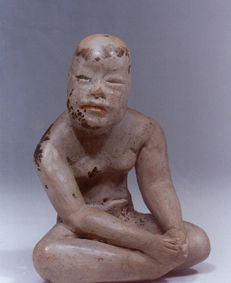
cross-legged seated male figurine@BC900-600 Las Bocas, Puebra, Central Highland Mexico 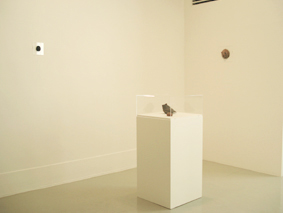
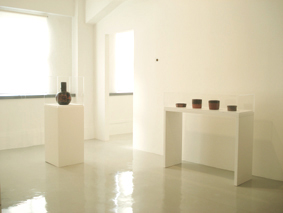
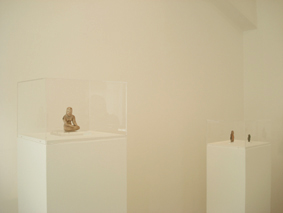
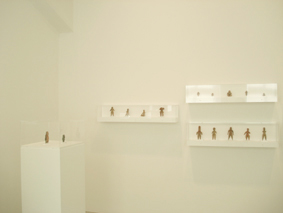
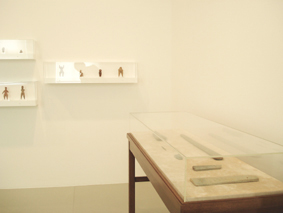
|
In ancient times, Man invented a primitive form of agriculture in various parts of the world after the era of day-to-day hunting and fishing. This led to the rapid rise of urban civilizations that developed unique and vigorous cultures, even in areas with severe natural environments. The Olmec civilization was prosperous in the Pre-Classic period from about 1250 B.C. through around 1 B.C. throughout the Central American region called Mesoamerica. It extended from Mexico to Costa Rica, and especially flourished in the southern coastal area of the Gulf of Mexico, specifically Veracruz and Tabasco where many stone sculptures, including a colossal human head 3 meters high and 3 tons in weight, were first discovered. The name Olmec was derived from Olman (rubber country), the indigenous central Mexican peopleÕs name for this area of the Gulf. Olmec is the adjective form of Olman. The Olmec is considered to be the mother civilization of Mesoamerica. While the people shared the same religion, calendar and agriculture, other aspects developed differently from region to region. Furthermore, as the Chavin culture of the Peruvian Andes shows similarities to Olmec in art style, armor-shaped earthenware, long-necked vases and roller stamps, Olmec seems to have prevailed widely in South America as well. Dr. Michael Coe of Yale University, who excavated the Olmec ruins in Mexico and Guatemala, organized an Olmec art exhibition, "JaguarÕs Children: Pre-Classic Central Mexico," in 1965 at the then Museum of Primitive Art, New York City. The title came from the Olmec belief that their ancestry was a cross between jaguar and human. This is why many Olmec stone sculptures and pottery pieces represent eyebrows, mouths, faces, heads and paws of jaguar. In this culture jade, the green stone that symbolized the energy of plants and water, was important so they produced numerous sculptures in various shapes and designs in this material. We are pleased to show you these 38 items and hope the charm of this Pre-Columbian civilization's aesthetics will impress you across time and space. |